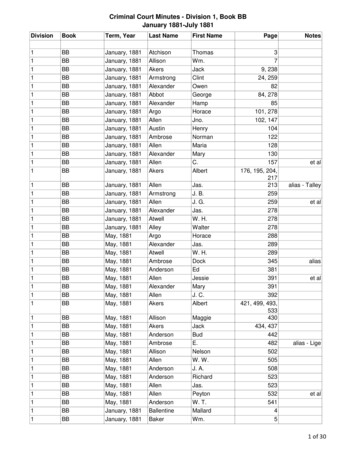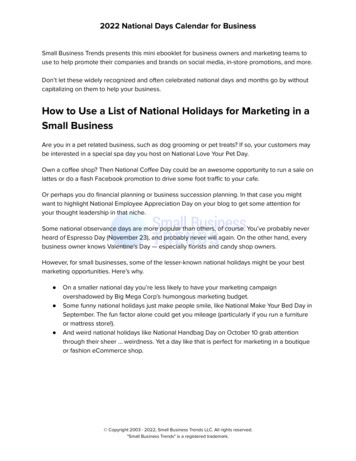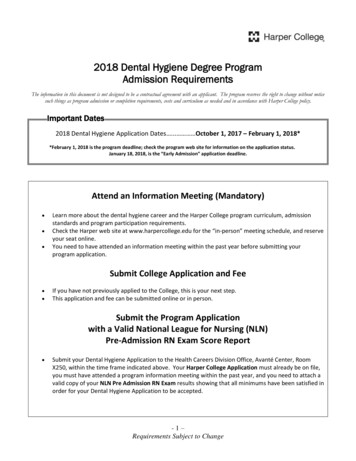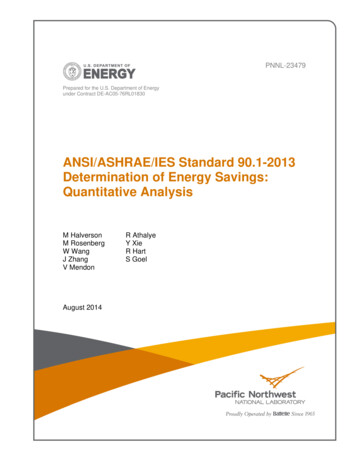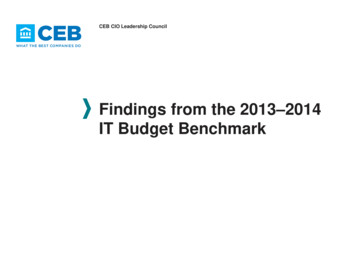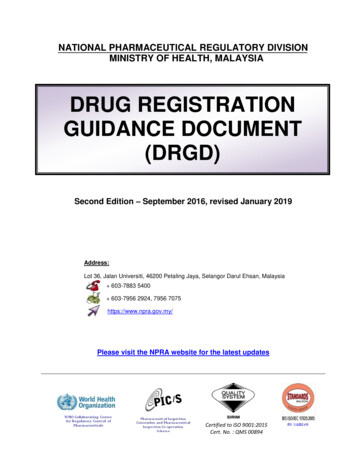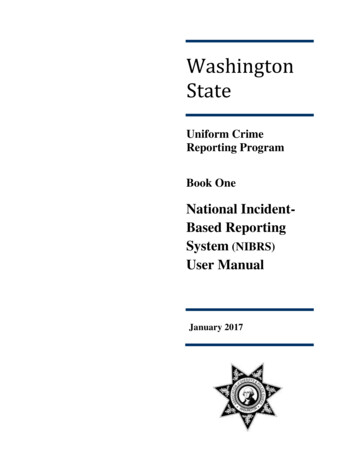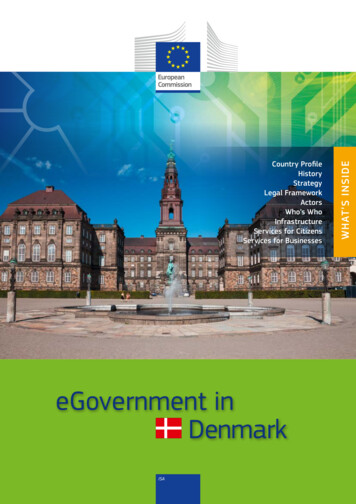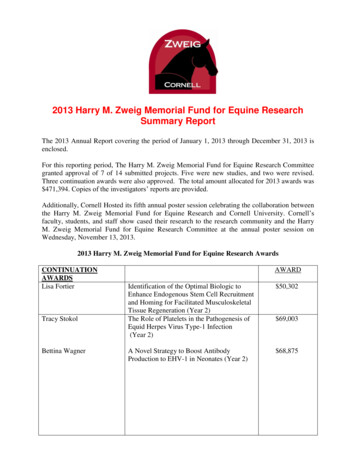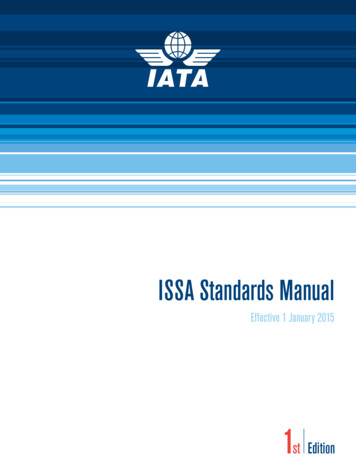
Transcription
January 29, 2013Federal Enterprise ArchitectureFrameworkVersion 2ServiceDeliveryGovernance(SRM)Security Controls(Ex 53/ 300)(EVM)Program Mgmt.Capital PlanningHuman Capital Mgmt. (KSAs)ReportingTransition PlanStandardsAuthoritativeReference1.1Engage Sponsor andAssess StakeholderNeeds2.1Iden fy Organiza onsand Service Providers toEngage3.1Formalize Collabora vePlanning Team andLaunch Planning4.1Define Funding Strategyand Make Decision5.1Operate with the NewCapabili es1.2Analyze and ValidateNeeds2.2Analyze Opportuni esto Leverage3.2Refine the Vision forPerformance andOutcomes4.2Obtain Resources andValidate Plan5.2Measure PerformanceAgainst Metrics1.3Formulate Case toAddress the Needs2.3Determine Whether toLeverage3.3Analyze the CurrentState, DetermineAdjustments, and Planthe Target State4.3Execute the Plan5.3Analyze and ProvideFeedback1.4Iden fy and EngageGovernance3.4Formulate theIntegrated Plan andRoadmap3.5Ini ate Execu ic Plan/Goals (PRM)RoadmapStrategicPlan/Goals (PRM)Strategic Plan/Goals(PRM)BusinessStrategic Plan/Goals(PRM)Strategic Plan / BusinessData ost(IRM)InfrastructureInfrastructure
January 29, 2013Table of Contents1 Introduction to the Federal Enterprise Architecture Framework (FEAF) v2 . 112 Overview of the Collaborative Planning Methodology . 133 Step 1: Identify and Validate . 153.1 Purpose . 153.2 The Planner’s Role. 153.3 Outcome . 164 Step 2: Research and Leverage . 164.1 Purpose . 164.2 The Planner’s Role. 164.3 Outcome . 165 Step 3: Define and Plan . 175.1 Purpose . 175.2 The Planner’s Role. 175.3 Outcome . 176 Step 4: Invest and Execute . 186.1 Purpose . 186.2 The Planner’s Role. 186.3 Outcome . 187 Step 5: Perform and Measure . 187.1 Purpose . 187.2 The Planner’s Role. 187.3 Outcome . 198 Overview of the Consolidated Reference Model . 209 Introduction to the Performance Reference Model . 239.1 Purpose of the Performance Reference Model . 239.2 Structure of the Performance Reference Model . 2310 Using the Performance Reference Model Taxonomy . 2410.1 Integrating CPIC (Exhibit 300) Performance Reporting with the FEA PRM . 2411 PRM Touchpoints with other Reference Models . 2512 Associated Methods/Best Practices for the PRM . 252
January 29, 201312.1 Line of Sight. 2512.2 Selecting a Balanced Set of Exhibit 300 Performance Measures. 2813 PRM Summary. 2814 Introduction to the Business Reference Model . 3014.1 Purpose of the Business Reference Model . 3014.2 Structure of the Business Reference Model . 3015 Using the Business Reference Model Taxonomy . 3115.1 Identifying opportunities to share services government-wide . 3115.2 Reducing costs by eliminating duplication within the enterprise . 3116 BRM Touchpoints with other Reference Models. 3217 Associated Methods/Best Practices for the Business Reference Model . 3317.1 Business Architecture for Decision Support . 3317.2 Business Process Modeling . 3418 BRM Summary . 3419 Introduction to the Data Reference Model . 3519.1 Purpose of the Data Reference Model . 3519.2 Structure of the Data Reference Model. 3520 Using the Data Reference Model Taxonomy . 3620.1 Using the DRM to Compare Data Sources across Federal Agencies . 3620.2 Using the DRM to Create a Standardized Information Exchange . 3621 DRM Touchpoints with other Reference Models . 3722 Associated Methods/Best Practices for the Data Reference Model . 3722.1 Data Description . 3722.2 Data Context . 3822.3 Data Sharing . 3923 DRM Summary . 3924 Introduction to the Application Reference Model . 4124.1 Purpose of the Application Reference Model. 4124.2 Structure of the Application Reference Model . 4125 Using the Application Reference Model . 4225.1 IT Cost Reduction through IT/ Application Portfolio Management . 4225.2 Using the ARM with the entire Consolidated Reference Model (CRM) . 433
January 29, 201326 ARM Touchpoints with other Reference Models . 4327 Associated Methods/Best Practices for the Application Reference Model. 4427.1 Capability Modeling and Analysis . 4427.2 Service Oriented Architecture . 4427.3 Portfolio Management . 4528 ARM Summary . 4529 Introduction to the Infrastructure Reference Model . 4629.1 Purpose of the Infrastructure Reference Model. 4629.2 Structure of the Infrastructure Reference Model. 4630 Using the Infrastructure Reference Model Taxonomy . 4730.1 Using the IRM to Create an IT Asset Management (ITAM) . 4730.2 Using the IRM to Identify Opportunities for Shared Services . 4831 IRM Touchpoints with other Reference Models . 4832 Associated Methods/Best Practices for the Infrastructure Reference Model . 4932.1 Methods . 4932.2 Best Practices . 4933 IRM Summary. 5034 Introduction to the Security Reference Model . 5134.1 Purpose of the Security Reference Model . 5134.2 Structure of the Security Reference Model . 5135 Using the Security Reference Model Taxonomy . 5235.1 Using Standards to classify Policy at the International, National, Federal, Sector, Enterprise orDepartment Level . 5235.2 Using Policy to select Controls at the Agency or Segment Level . 5335.3 Enforcing Design with Controls at the System or Application Level . 5336 SRM Touchpoints with other Reference Models . 5437 Associated Methods/Best Practices for the Security Reference Model . 5437.1 Risk Based Design. 5437.2 Security Controls . 5538 SRM Summary . 5539 Artifacts . 5739.1 Strategy Sub-Architecture Domain . 584
January 29, 201339.2 Business Sub-Architecture Domain. 5939.3 Data Sub-Architecture Domain . 6039.4 Applications Sub-Architecture Domain. 6239.5 Infrastructure Sub-Architecture Domain . 6339.6 Security Sub-Architecture Domain. 64Appendix A: Collaborative Planning Methodology Guidance Document . 65A.1 Overview of the Collaborative Planning Methodology . 65A.1.1 Step 1: Identify and Validate . 67A.1.2 Step 2: Research and Leverage . 68A.1.3 Step 3: Define and Plan. 68A.1.4 Step 4: Invest and Execute. 69A.1.5 Step 5: Perform and Measure. 70A.2 Step 1: Identify and Validate . 71A.2.1 Step At-a-Glance . 72A.2.2 A Note on Core Artifacts . 73A.2.3 Activity 1.1: Engage Sponsor and Assess Stakeholder Needs . 73A.2.4 Activity 1.2: Analyze and Validate Needs . 76A.2.5 Activity 1.3: Formulate case to address the needs . 78A.2.6 Activity 1.4: Identify and Engage Governance . 81A.3 Step 2: Research and Leverage . 85A.3.1 Step At-a-Glance . 86A.3.2 A Note on Core Artifacts . 87A.3.3 Activity 2.1: Identify Organizations and Service Providers to Engage . 87A.3.4 Activity 2.2: Analyze Opportunities to Leverage . 89A.3.5 Activity 2.3: Determine Whether to Leverage . 92A.4 Step 3: Define and Plan. 94A.4.1 Step At-a-Glance . 95A.4.2 A Note on Core Artifacts . 97A.4.3 Activity 3.1: Formalize Collaborative Planning Team and Launch Planning . 97A.4.4 Activity 3.2: Refine the vision for performance and outcomes . 100A.4.5 Activity 3.3: Analyze the Current State, Determine Adjustments, and Plan the Target State . 104A.4.6 Activity 3.4: Formulate the Integrated Plan and Roadmap . 1255
January 29, 2013A.4.7 Activity 3.5: Initiate Execution Governance. 131A.5 Step 4: Invest and Execute . 135A.5.1 Step At-a-Glance . 137A.5.2 A Note on Core Artifacts . 137A.5.3 Activity 4.1: Define Funding Strategy and Make Decision . 138A.5.4 Activity 4.2: Obtain Resources and Validate Plan. 139A.5.5 Activity 4.3: Execute the Plan . 139A.6 Step 5: Perform and Measure. 141A.6.1 Step At-a-Glance . 142A.6.2 A Note on Core Artifacts . 142A.6.3 Activity 5.1: Operate with the New Capabilities. 142A.6.4 Activity 5.2: Measure Performance Against Metrics . 143A.6.5 Activity 5.3: Analyze and Provide Feedback . 143Appendix B: Business Reference Model (BRM) . 144B.1 Business Reference Model Overview . 144B.1.1BRM Structure . 145B.2 Using the BRM Taxonomy. 147B.2.1B.2.1.1B.2.2Inter-Agency . 147Office of Management and Budget. 147Intra-Agency . 147B.2.2.1Agency Executives and Business Managers . 147B.2.2.2Agency CIOs. 148B.2.2.3Portfolio Managers . 149B.2.2.4Architects . 149B.2.2.5Project Managers . 151B.2.2.6Development Teams . 151B.3 Associated Methods . 152B.3.1Business Architecture for Decision Support . 152B.3.2Business Process Modeling . 153B.3.3Business Process Modeling Notation (BPMN) . 154B.4 BRM Taxonomy . 155Appendix C: Data Reference Model (DRM) . 1566
January 29, 2013DRM Executive Summary . 156C.1 Introduction . 157C.1.1FEA DRM Focus . 157C.1.2DRM as Federal Guidance . 157C.1.3What the DRM Is and Is Not. 158C.1.4The DRM and Knowledge Management . 158C.1.5FEA DRM Meta-Model . 159C.1.6DRM Fundamental Methods . 161C.1.7DRM Overview . 162C.2 Associated Methods and Data Standards . 163C.2.1Data Description . 163C.2.1.1Overview of Metadata . 163C.2.1.2Data Description Methods . 164C.2.2Data Context . 166C.2.2.1Role of Data Context in Governance . 166C.2.2.2Data Categorization Methods . 167C.2.2.3Usage Context . 168C.2.3Data Sharing . 170C.2.3.1Sharing Data through Data Exchange Services . 170C.2.3.2Data Sharing through Data Access Services . 173C.2.3.3Information Sharing . 174C.3 DRM Examples of Use . 176C.3.1Use Case Example One: Comparing Data Sources across Federal Agencies. 176C.3.2Use Case Example Two: Standardized Information Exchange for Suspicious ActivityReporting . 176C.4 Measurement Success Factors . 177C.5 Summary . 179Appendix C.i: List of Acronyms. 180Appendix D: Application Reference Model (ARM). 182D.1 Introduction to the Application Reference Model (ARM) . 182D.1.1D.1.1.1Purpose . 183ARM Guiding Principles . 1847
January 29, 2013D.2 Associated Methods / Best Practices. 184D.2.1Capability Modeling and Analysis . 185D.2.2Service Oriented Architecture . 185D.2.3Portfolio Management . 185D.3 Using the Application Reference Model. 186D.3.1 Use Case: IT Cost Reduction through IT / Application Portfolio Management . 186D.3.1.1Synopsis. 186D.3.1.2Challenge. 186D.3.1.3Solution . 187D.3.1.4Possible Results . 187D.3.2 Use Case: Using the ARM with the entire Consolidated Reference Model (CRM) . 187D.3.2.1Synopsis. 187D.3.2.2Challenge. 188D.3.2.3Solution . 188D.3.2.4Results . 189Appendix E: Infrastructure Reference Model (IRM) . 191E.1 Introduction to the IRM .
Federal Enterprise Architecture Framework Version 2 Service Delivery Authoritative Reference on l n Future Views Current Views Transition Plan d Governance Standards g Host Infrastructure Enabling Applications Data and Information Business Services Strategic Plan/Goals
